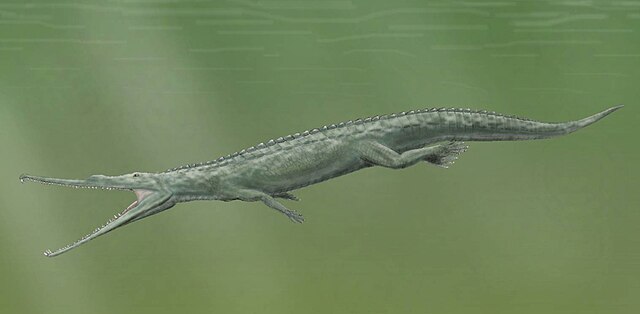Parasuchus is an extinct genus of basal phytosaur known from the Late Triassic of Andhra Pradesh and Madhya Pradesh, India. At its most restricted definition, Parasuchus contains a single species, Parasuchus hislopi. Parasuchus hislopi is one of several species belonging to a basal grade of phytosaurs, typified by the genus Paleorhinus. Historically, Paleorhinus has been known from better-described fossils, and many species have been lumped into that genus. Parasuchus hislopi, despite being described earlier than Paleorhinus, was considered an undiagnostic chimera until new neotype fossils were described in the late 1970s. Parasuchus hislopi and the two unambiguously valid species of Paleorhinus are all closely related; some authors have historically described them all under the species Paleorhinus, while others place the two Paleorhinus species into Parasuchus according to the principle of priority.

Paleorhinus cf. arenaceus, a Polish phytosaur species tentatively referred to the genus Paleorhinus. Paleorhinus is sometimes considered a junior synonym of Parasuchus, due to being described later
Phytosaurs are an extinct group of large, mostly semiaquatic Late Triassic archosauriform reptiles. Phytosaurs belong to the order Phytosauria. and are sometimes referred to as parasuchians. Phytosauria, Parasuchia, Parasuchidae, and Phytosauridae have often been considered equivalent groupings containing the same species. Some recent studies have offered a more nuanced approach, defining Parasuchidae and Phytosauridae as nested clades within Phytosauria as a whole. Phytosaurs were long-snouted and heavily armoured, bearing a remarkable resemblance to modern crocodilians in size, appearance, and lifestyle, as an example of convergence or parallel evolution
Phytosaur
Illustration of two Smilosuchus species, illustrating brachyrostral and dolichorostral snout types
Phytosaur skull
Image: Angistorhinus grandis





